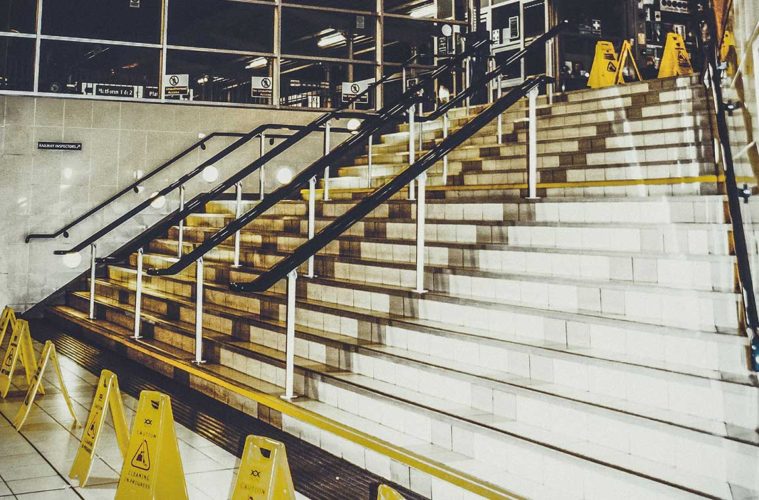A staircase is one of the most unstable surfaces. What makes them even more dangerous is that just like a slippery surface floor, you may not detect a hazardous staircase surface. Most staircase defects can lead to catastrophic injuries, and they are not always visible. You may need to examine the stairs carefully to identify the hazard. So, who is liable for your stairway slip and fall accident? The answer lies with the property owner or the agency responsible for maintaining the stairway. However, before we get there, let us examine the possible causes of these types of accidents.
Common Causes Of Slip And Fall Accidents
Old Surfaces
The stair run or steps may get worn down over time, whether it’s made of wood or is carpeted. If not properly maintained, this surface will eventually become slippery and cause accidents.
Icy Or Wet Surfaces
When using the outdoor stairs during harsh weather such as during winter, it’s your responsibility to be careful. However, excessive snow/ice may build up and can make the stair surface wet and slippery. It’s the premise owner’s responsibility to prevent such hazards. Failure to do so will make them responsible for any injuries that may occur.
Faulty Building Codes
State and municipal governments require property owners to abide by specific building codes. Failure to adhere to these requirements may lead to poor workmanship and defective stairways, which leads to possible premise liability cases.
Most of these building codes require staircases to have handrails and the ideal height, width, and depth. Improper dension, defective or lack of a handrail on a staircase can expose the property owner to a premise liability case.
Proving Fault In A stairway Slip And Fall Accident
If you were seriously injured and brought a lawsuit against the property owner, the following elements of negligence must be true. You must prove that the owner or their workers were responsible for the danger that caused the accident (spilled water, oil, torn carpet, broken handrail, etc.). You must prove that although the owner or their employees knew about the hazards, they failed to prevent them. Finally, you must prove that by failing to keep the premises safe, the owner and the employee failed in their duty of care owed to you. If you and your attorney can prove these elements of a stairway slip and fall accident, you can build up a strong case against the liable parties.
Work With An Experienced stairway Slip And Fall Attorney
Proving fault in a premise liability case is not a walk in the park. Following an accident of that nature, the negligent persons may try to rectify the mistakes before you have the time to make a claim. Broken or faulty handrails can be repaired, worn-out carpets can be replaced, and snow can be shovelled away. Your best chance at winning the lawsuit is by taking photos of the accident scene when it happens. Additionally, working with an experienced slip and fall personal injury lawyer can help you prove fault and build a solid case against the at-fault parties.





